Trump & Putin to Meet in Seward's Icebox
Looking forward to the conference and looking back at the American-Russian meetings of the past.
Donald Trump is set to meet Vladimir Putin in the former Russian territory of Alaska (purchased from Russia in 1867 for $7.2 million in a deal made by Secretary of State William Seward that was lampooned by many Republicans as “Seward’s Folly” or “Seward’s Icebox”). Since then, Alaska has yielded hundreds of billions of gold and oil wealth to American interests.
I’m surprised that the Russians would agree to this location on American soil, given the security challenges it poses. In recent years, the U.S. government has demonstrated that it is capable of all manner of reckless insanity, so I wouldn’t be surprised if the sort of shadowy, lunatic outfit that blew up of the Nord Stream pipeline attempts to murder President Putin in Alaska.
The forthcoming occasion prompted me to review the literature and imagery of past meetings between U.S. and Russian leaders.
The first was between Roosevelt and Stalin at the Yalta Conference on January 30, 1945, when Stalin basically got everything he asked for. The Russians may have gained some advantage by bugging the rooms of the American delegation at the Livadia Palace and having their spy, Alger Hiss, in attendance with Roosevelt’s inner circle.
It’s a strange irony of history that the American Left now loathes Vladimir Putin, because back in the 1930s and 40s, the American Left was highly sympathetic to Stalin and turned a blind eye to his monstrous crimes, including the great famine in Ukraine in 1932 (known as the Holodomor) that was largely caused by Soviet confiscation of Ukrainian grain and collectivization of its most productive farms.
Here’s Truman meeting Stalin at the Potsdam Conference on July 17, 1945, at which he told Stalin that the U.S. was in possession “of a new weapon of unusual destructive force.” Stalin showed no reaction to this announcement. This was easy enough for him to do, given that he already knew about the U.S. atomic bomb program from his spies.
Below is an image of President Eisenhower having a grand old time with Nikita Khrushchev and their wives at the White House on September 27, 1959. This was the first time a Soviet leader visited the United States. A funny exchange occurred when President Eisenhower asked Khrushchev if he would like to do a helicopter sightseeing tour around Washington D.C. Khrushchev declined the invitation, at which point Eisenhower expressed his regret that “You won’t join me for this special tour.” Upon hearing this, Khrushchev said, “Oh, If you are to be in the same helicopter, of course I will go!’”
I hope that President Putin will remember Khrushchev’s prudence if he is invited on a chopper sightseeing tour in Alaska.
Here is Khrushchev meeting President Kennedy in Vienna on June 4, 1961.
That evening they met for a gala at the Vienna Schoenbrunn Palace. When asked if he would like to be seated next to President Kennedy, Khrushchev replied, “I’d rather be seated next to his wife,” and his wish was fulfilled.
Here’s Nixon meeting Leonid Brezhnev in Moscow— the first time an American President visited the Soviet capital during the Cold War.
Nixon took a tough stance against communism and he was one of the first American politicians to suspect Alger Hiss of being a spy. However, he was also a very skilled diplomat. He and Brezhnev negotiated and signed multiple arms control agreements, most importantly the Strategic Arms Limitation Treaty (SALT I) of 1972, which limited the number of strategic nuclear missiles each superpower could deploy.
Here’s Reagan welcoming Gorbachev to Washington in December 1987 to sign the Intermediate-Range Nuclear Forces (INF) Treaty, from which the Trump administration very foolishly withdrew in 2019.
Reagan and Gorbachev apparently got along well and maintained a good sense of humor at their meetings. Later Gorbachev joked “Whenever we parted company, Reagan always said, ‘If it’s God’s will….” and I would look around the room to see if God was present.”
Here is Trump meeting with Putin at the APEC Summit in Danang, Vietnam on November 11, 2017. The United States lost its war in Vietnam in 1975, the Russians lost the Cold War in 1991, and then the nations’ subsequent leaders met in Vietnam in 2017. I doubt that any U.S. foreign policy wonk in 1975 could have imagined this turn of events in his wildest dreams.
As President Trump prepares for his meeting with Putin on Friday, I hope he will bear in mind that the American people have no interest in demanding that the ethnic Russian and Russian-speaking Donbas region remain with Ukraine. The urgent interest of the American people is to make peace with Russia, which has legitimate security interests in the territory on its western border.
For more information about the war in Ukraine and the forthcoming summit, please read the following excellent essay by Connor O’Keeffe at the Mises Institute.



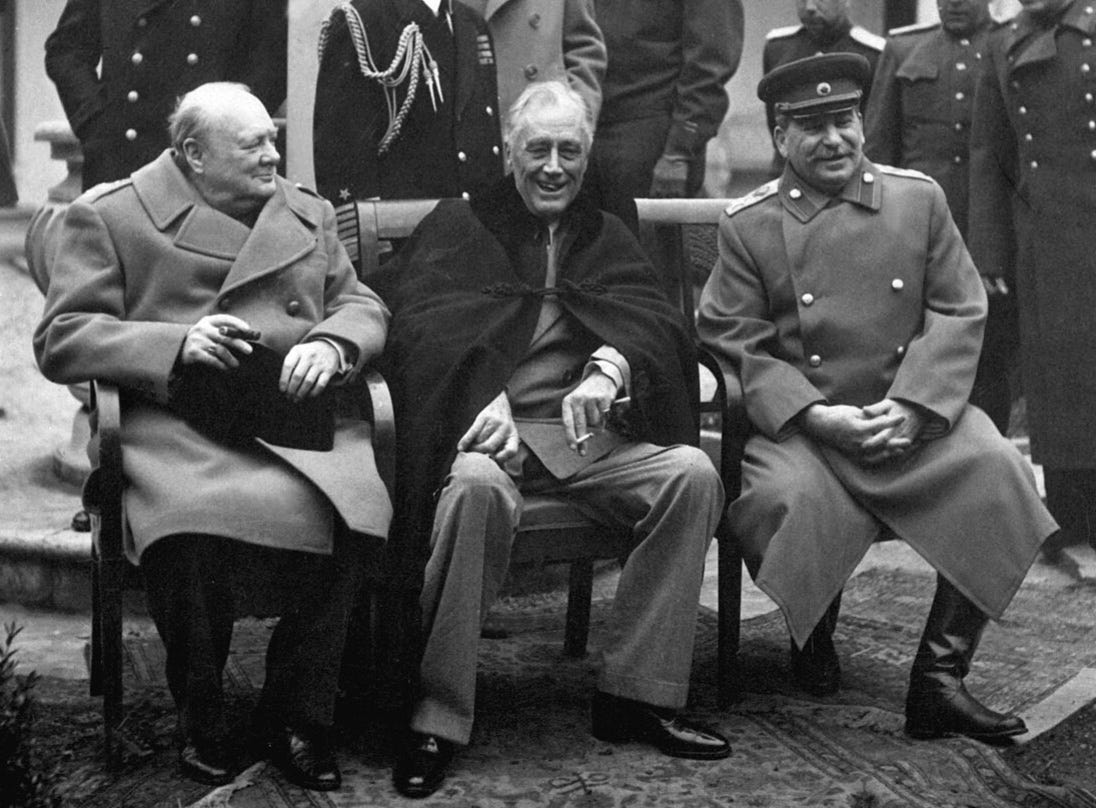

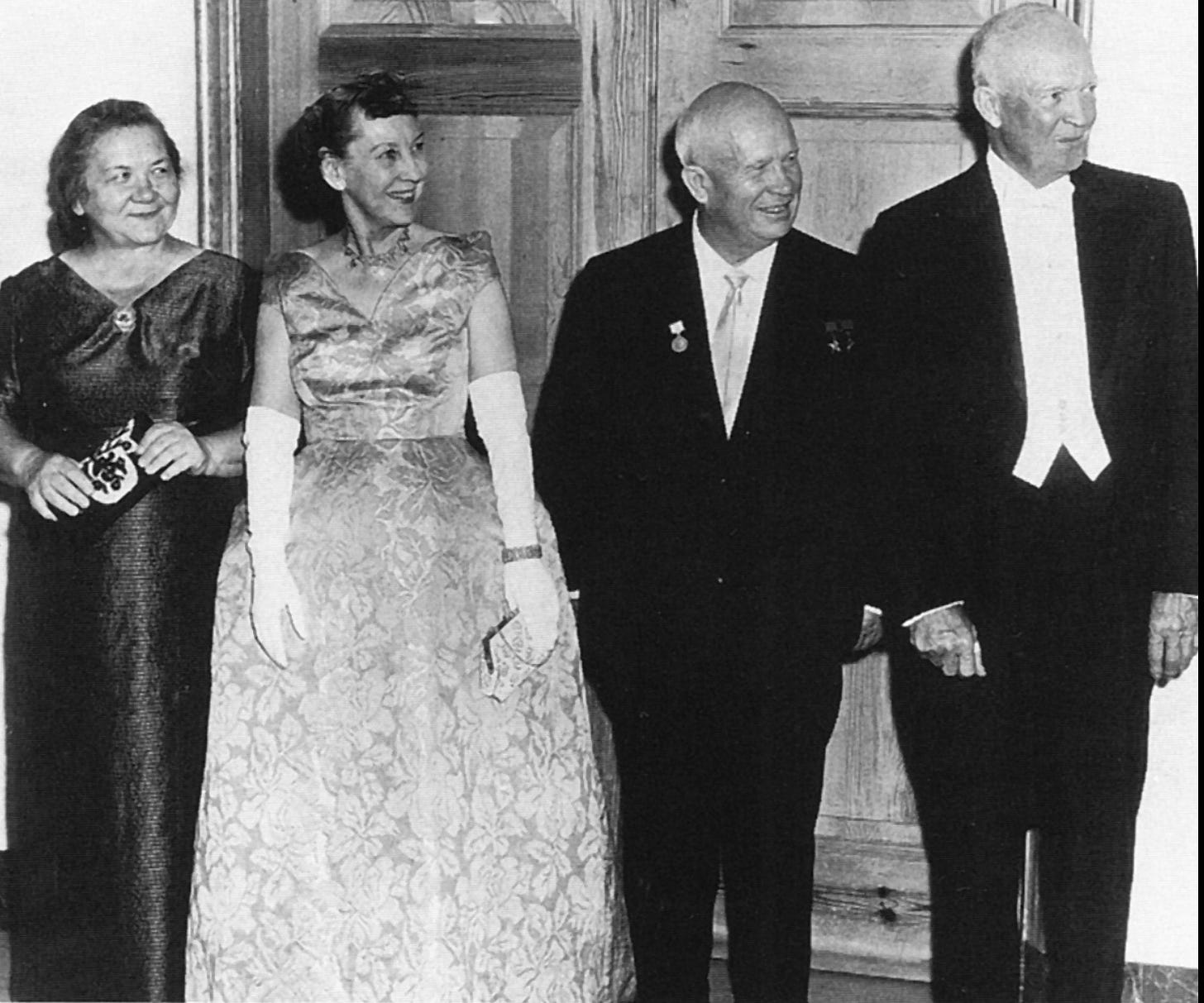

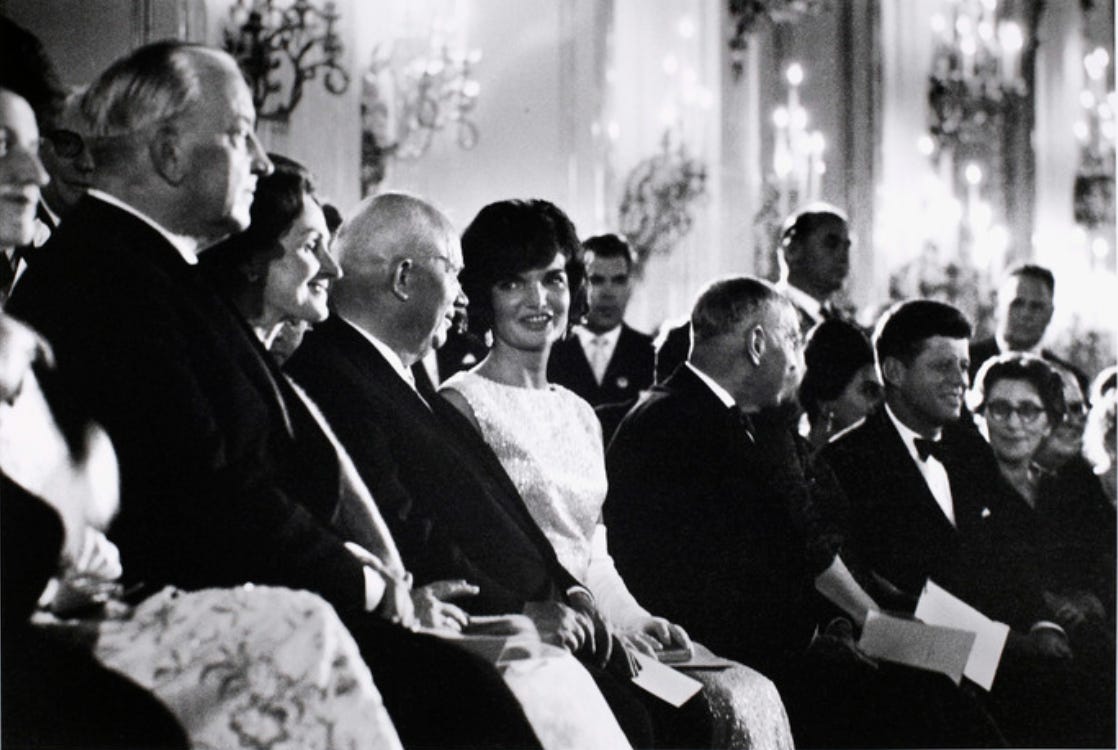
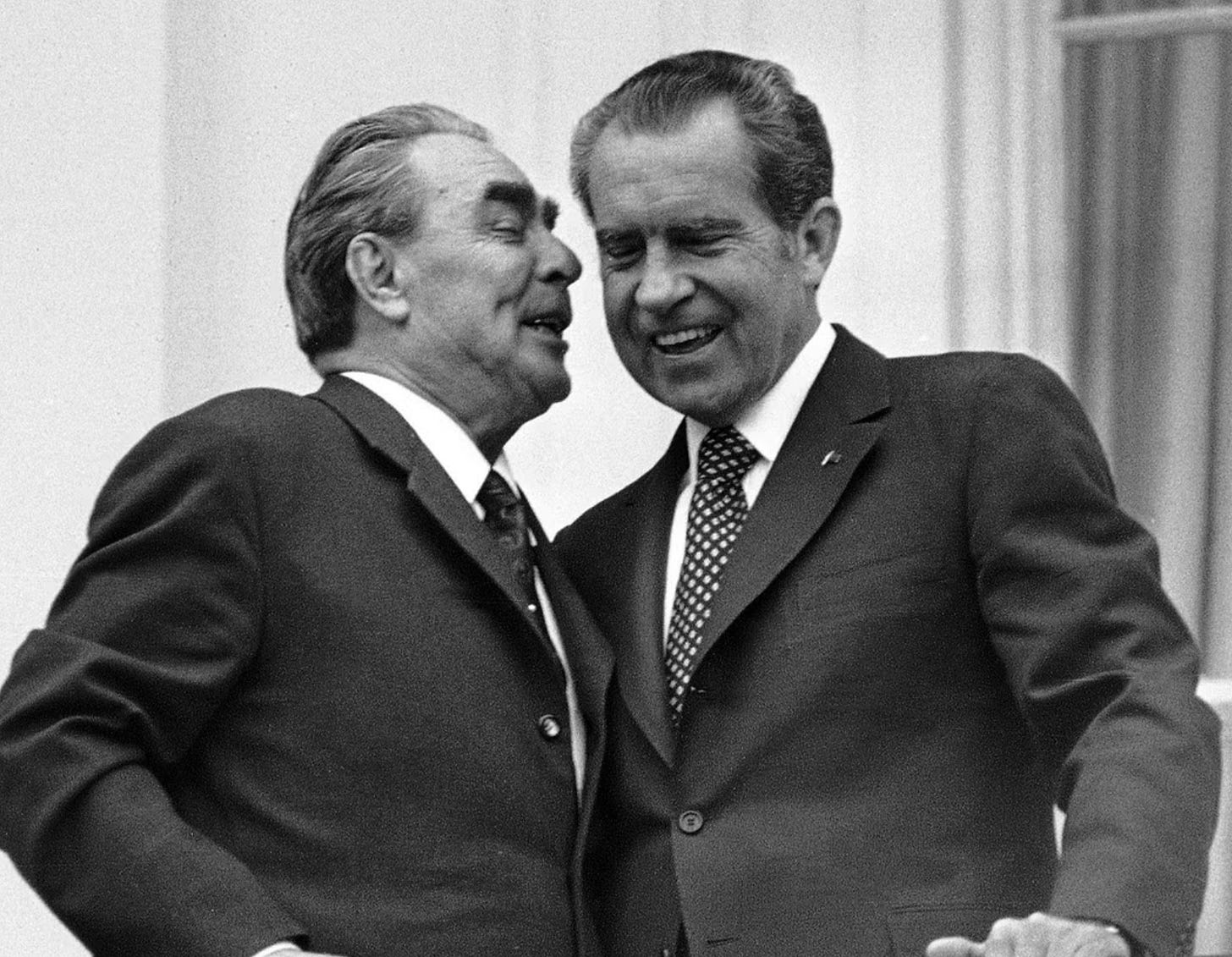


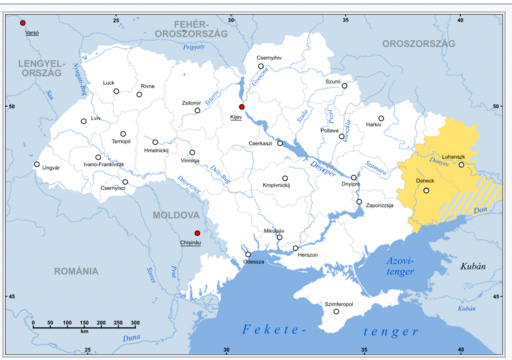
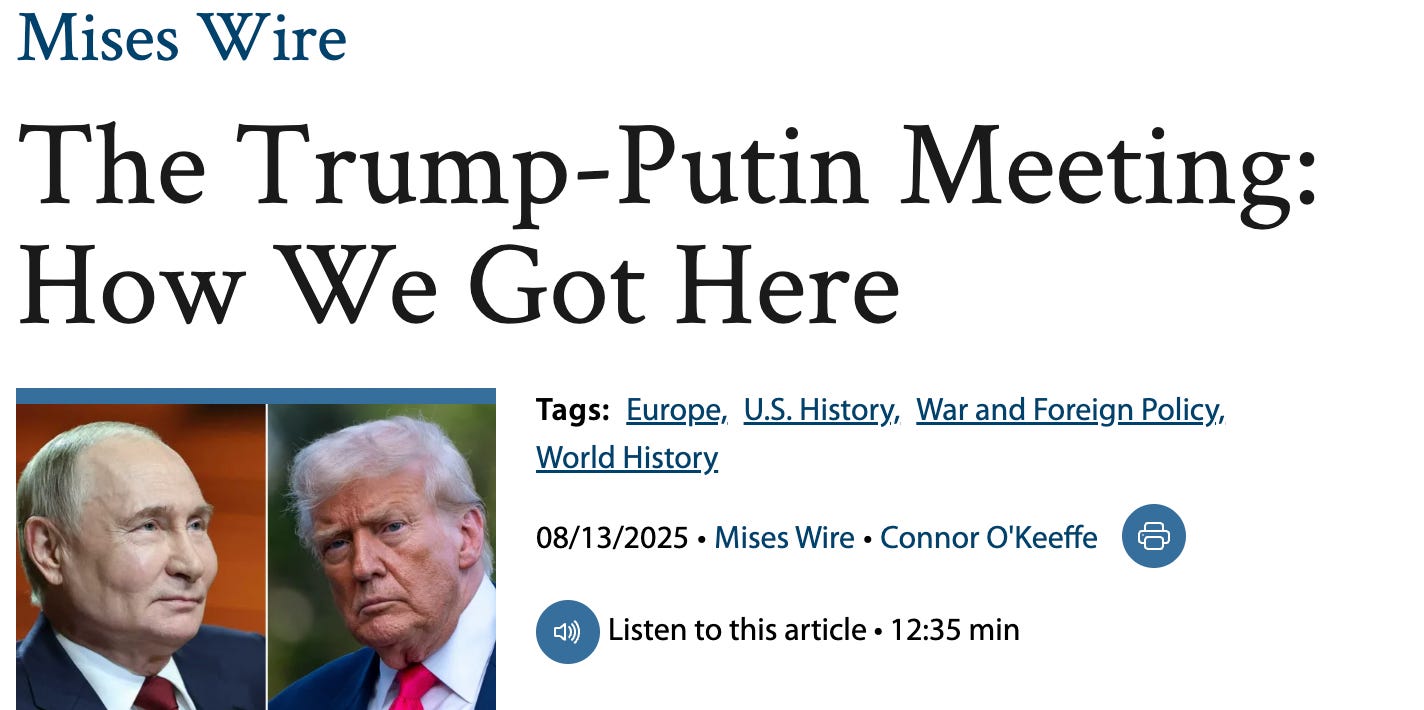
We need friendship between country's and not enemy's!
I think you meant Yalta not Malta?